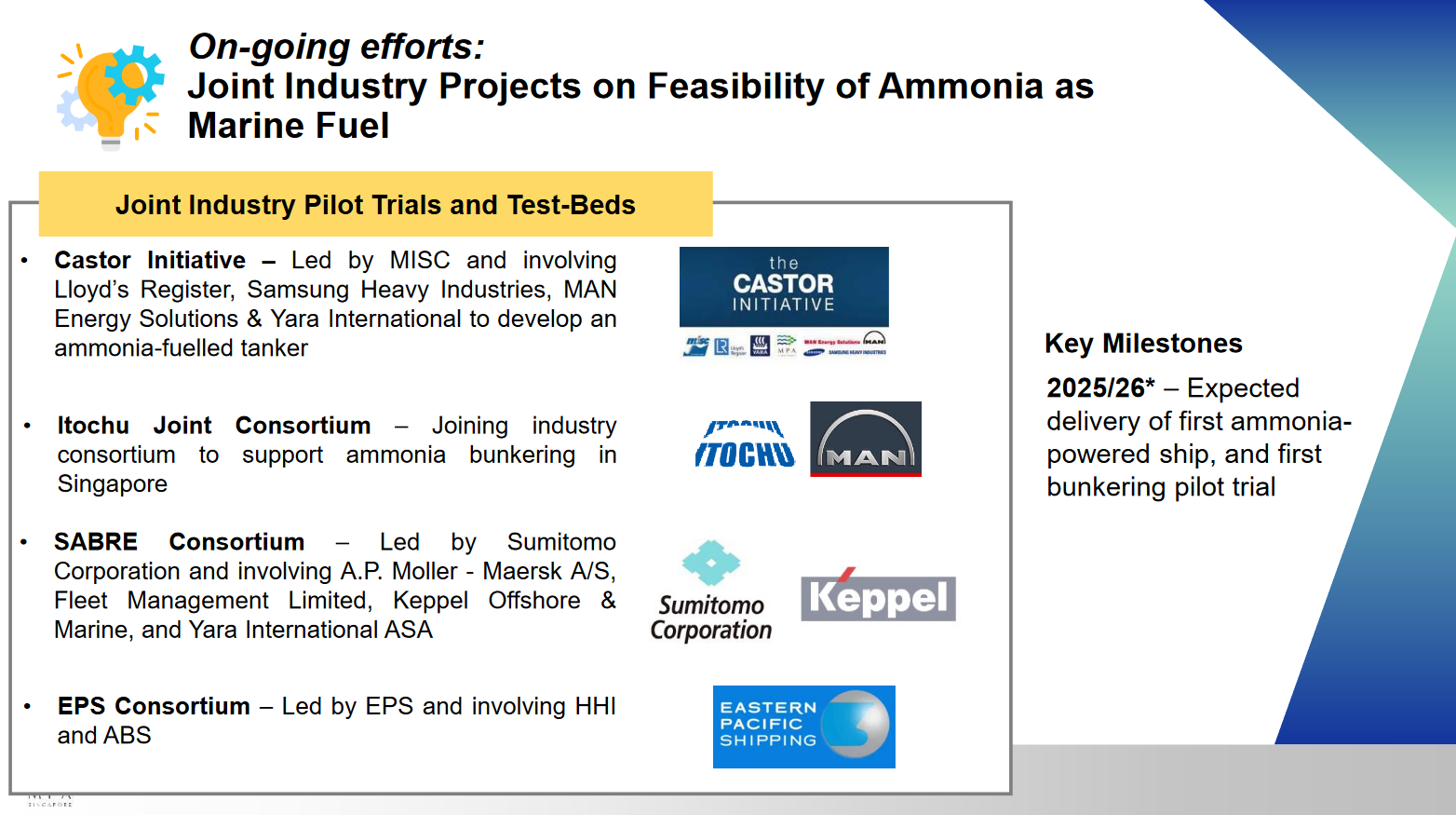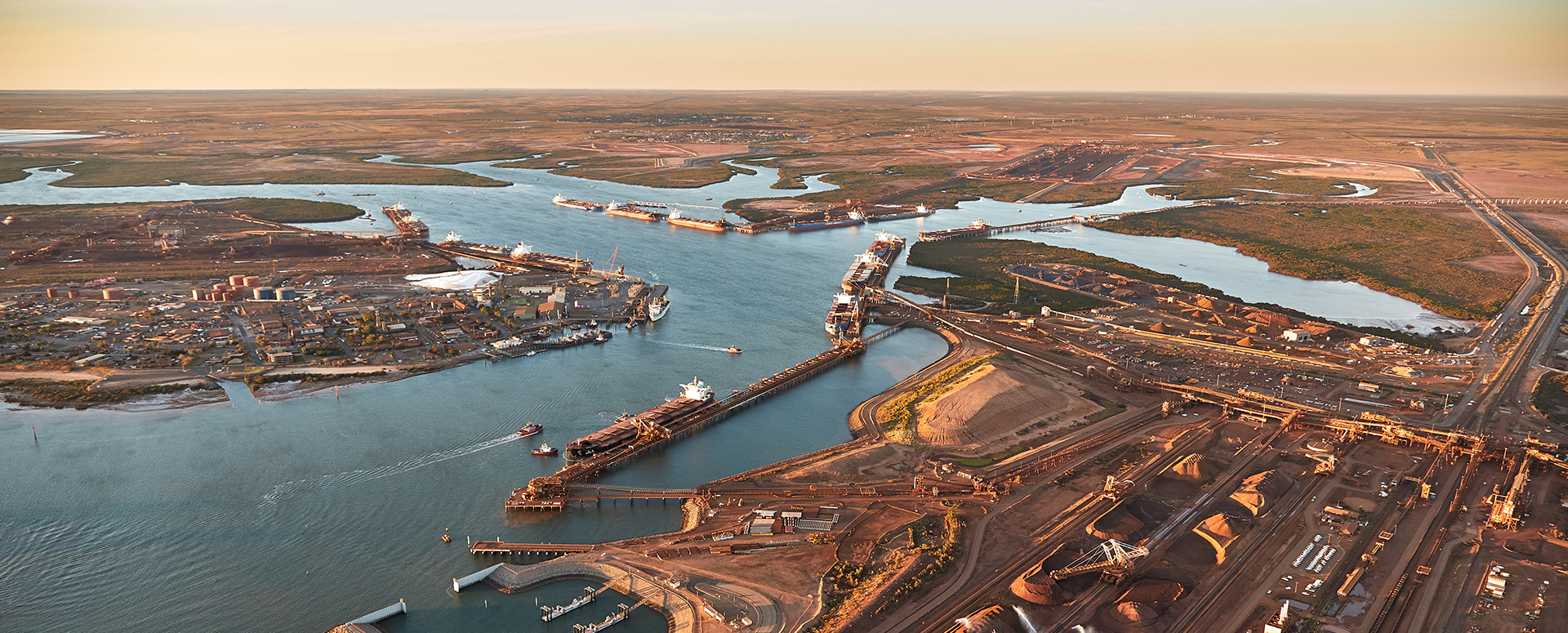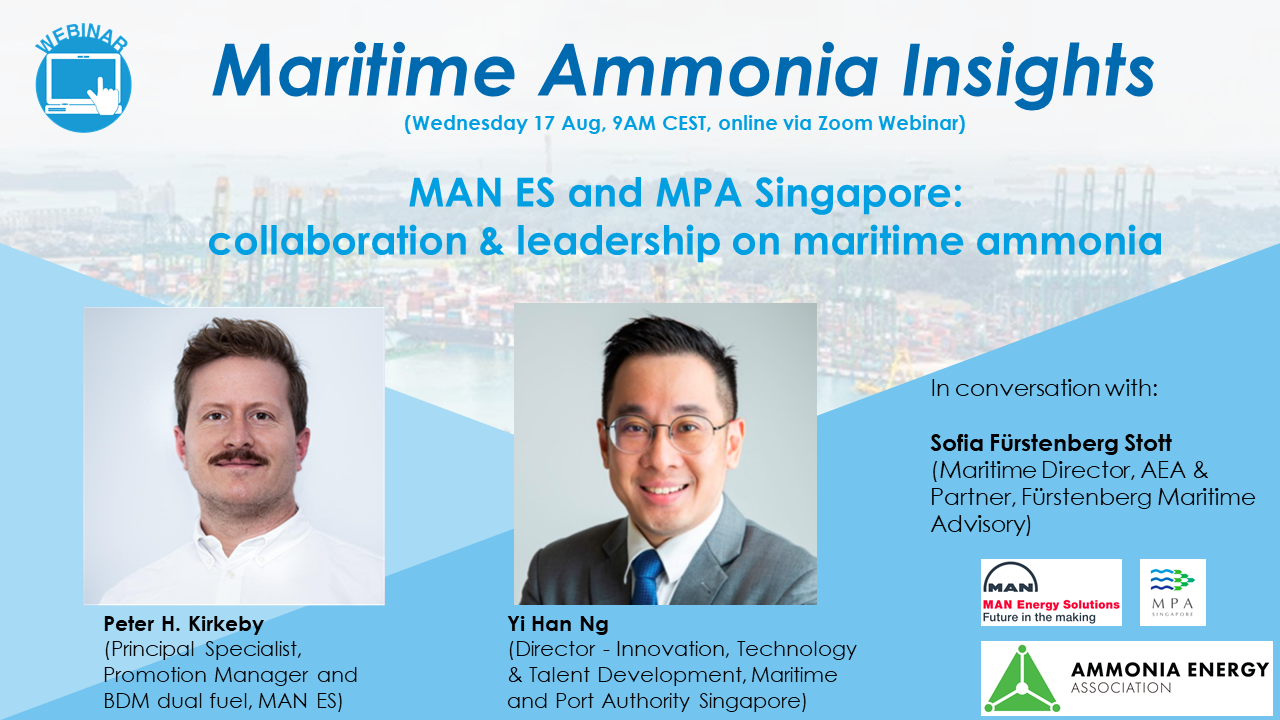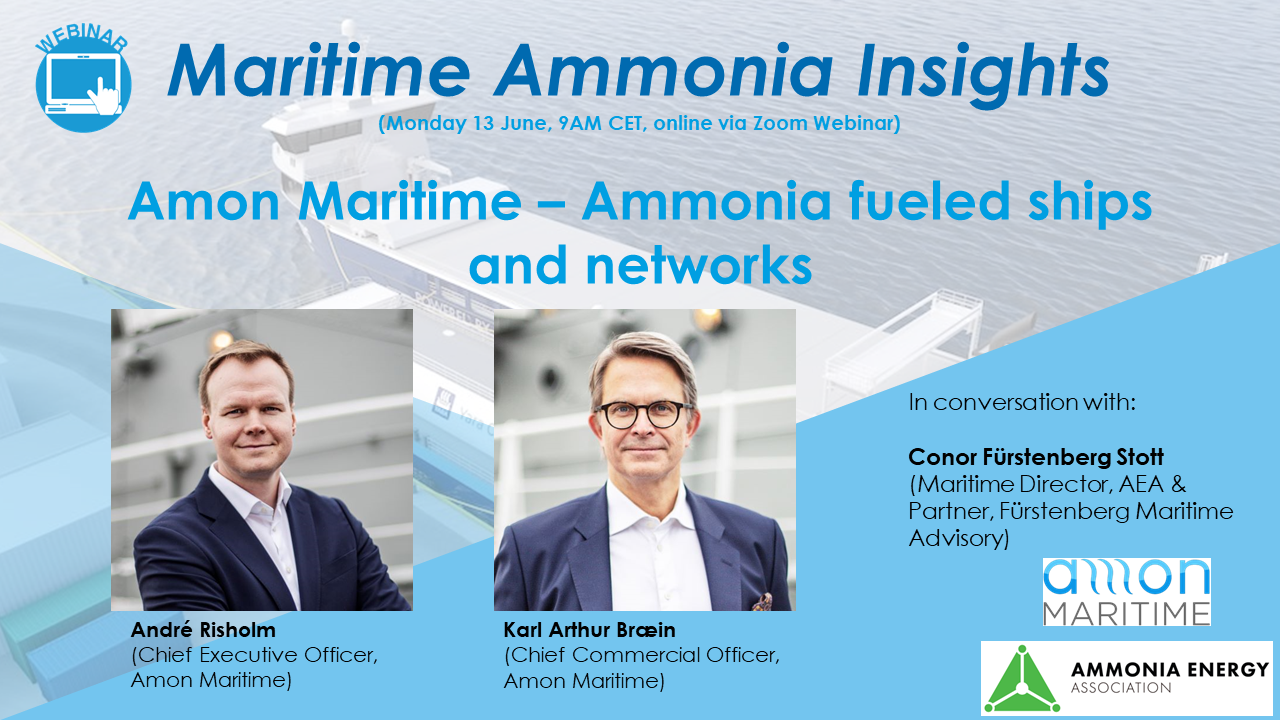Developing ammonia maritime engines & fuel: a collaborative approach
The latest episode of Maritime Ammonia Insights webinar centred around collaboration, leadership & Singapore: three critical elements in the maritime ammonia transition. Sofia Furstenberg Stott was joined by Peter H. Kirkeby (MAN Energy Solutions) and Yi Han Ng (Maritime and Port Authority Singapore), who discussed timelines for engine development, the benefits of a consortia approach, and the all-important safety & technical progress of maritime ammonia technologies.









